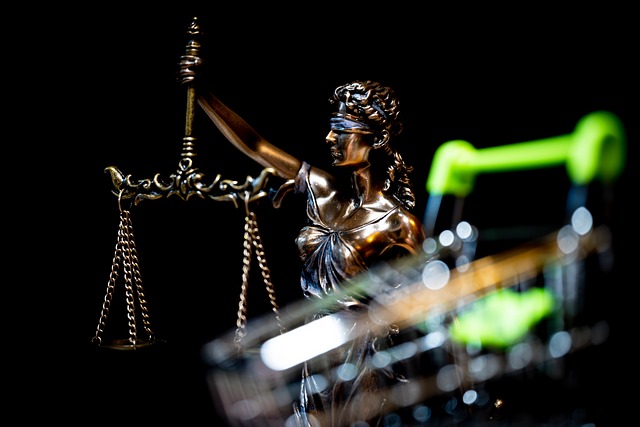The current DUI law landscape faces challenges balancing public safety and new technological advancements such as advanced breathalyzers, real-time monitoring, and intelligent traffic systems. While these innovations promise precise and efficient measurements to address inconsistencies in traditional methods, their integration introduces complexities like cost disparities, learning curves for officers and judicial bodies, and the need for ongoing training. Proactive legislation is necessary to harness the safety benefits of emerging technologies while addressing unique challenges, ensuring public safety without stifling technological progress.
“Loopholes Closing Gaps: Exploring Emerging Technologies in DUI Law”
The current state of DUI (Driving Under the Influence) legislation faces significant challenges. This article delves into the intricate web of legal frameworks, highlighting the impact of identified loopholes on public safety. We explore emerging technologies that are revolutionizing DUI law enforcement, such as advanced breathalyzer technology and real-time monitoring devices, aiming to bridge these gaps. Furthermore, we discuss the ethical implications and future challenges, including data privacy concerns and resistance from various sectors, as we navigate the intersection of technology and legal adaptation in DUI prevention.”
- The Current State of DUI Law and Its Challenges
- – Overview of current legal frameworks surrounding DUI (Driving Under the Influence)
- – Identified loopholes in existing laws and their impact on public safety
The Current State of DUI Law and Its Challenges

The current state of DUI (Driving Under the Influence) law faces significant challenges as society grapples with balancing public safety and technological advancements. Traditional methods of enforcement rely heavily on human observation, leading to potential loopholes and inconsistencies. With the rapid pace of Emerging Technologies in DUI Law, such as advanced breathalyzer devices, real-time blood alcohol monitoring, and intelligent traffic systems, these gaps are slowly being closed. These innovations promise more precise and efficient measurements, ensuring that drivers found impaired face stricter consequences.
However, the integration of new technologies also presents its own set of complexities. The cost and accessibility of these tools can vary widely across jurisdictions, creating disparities in enforcement capabilities. Additionally, as with any new system, there’s a learning curve for law enforcement officers and judicial bodies, requiring ongoing training and adaptation to ensure fair and effective implementation of DUI laws.
– Overview of current legal frameworks surrounding DUI (Driving Under the Influence)

The legal frameworks surrounding Driving Under the Influence (DUI) have evolved over time, but gaps still exist that need addressing. In many jurisdictions, DUI laws primarily rely on blood alcohol concentration (BAC) levels as the primary indicator of impairment. This traditional approach has been supplemented by emerging technologies aimed at enhancing accuracy and reliability in DUI enforcement. For instance, field sobriety tests, advanced breathalyzer devices, and even more innovative tools like portable breath testing devices have been integrated into legal procedures.
These emerging technologies in DUI law promise to close loopholes and provide more precise results. Advanced breathalyzers, for example, offer faster and more accurate readings than traditional models, reducing the potential for human error or manipulation. Portable breath testing devices can be used at various locations, including roadside checks, increasing the overall effectiveness of DUI enforcement. As technology continues to advance, legal frameworks are also adapting to incorporate these innovations, ensuring that laws keep pace with emerging scientific capabilities and maintaining public safety.
– Identified loopholes in existing laws and their impact on public safety

The evolving nature of society and technology has led to emerging technologies in DUI law, highlighting critical gaps in existing legislation. While traditional laws aim to deter drunk driving through strict penalties, new methods such as advanced driver-assistance systems (ADAS) and autonomous vehicles introduce complexities that aren’t fully addressed. Loopholes in these areas allow for potential misuse, where drivers could take advantage of cutting-edge features to evade responsibility during impaired driving incidents.
For instance, some ADAS technologies can automatically brake or steer a vehicle to prevent collisions, raising questions about driver intent and liability. Moreover, as autonomous vehicles gain traction, determining culpability in accidents becomes more intricate. These emerging technologies demand proactive legislation that considers both the safety benefits and unique challenges they present, ensuring public safety without hindering technological advancements.
In light of the above, it’s clear that while current DUI laws have made significant strides in promoting public safety, emerging technologies offer both opportunities and challenges. By leveraging innovative solutions, such as advanced breathalyzer devices and improved data analytics for predictive policing, we can further close gaps left by existing legal loopholes. This multifaceted approach ensures a safer driving environment, addressing the ongoing concerns surrounding DUI incidents.






